A blast of Bizet in the French wine aisle and even birdsong
in the loo... it all adds up to a more satisfying customer experience – and enhanced sales, says Suzy Bashford
Piped-in muzak and cheesy jingles. Rattling trollies. Screaming kids. Humming condensers. Beeping tills. Supermarkets have never sounded good.
More than that, research shows that the cacophony could be costing retailers dear.
Get the sound of a retail space right, say experts in this growing field of research, and shoppers will browse aisles for longer, spend more at the tills and feel more satisfied with their shopping experience. Get it wrong and their shopping trips will be more like smash and grab raids.
Until now, though, retailers in the UK have largely turned a deaf ear to soundscapes. That attitude may change later this year when one multiple embarks on a pilot study with sensory specialists The Sound Agency. After years knocking on the door of supermarketeers, the agency is poised to begin trials to prove audio stimulants can give sales a powerful kick.
"We have been talking on and off to supermarkets, but generally they are pretty reluctant to take part in the conversation," says chairman Julian Treasure . "They see sound as icing on the cake, whereas it's a fundamental part of the experience. You want customers to be mentally alert and physically relaxed it's usually the other way in supermarkets."
Studies by The Sound Agency suggest well-designed soundscapes can increase sales by up to 50%, although 5.5% to 10% is the norm.
At frozen food retail chain Cook, which held its first soundscape promotion across all 42 outlets over three days in May, head of brand James Rutter says improving the customer's sensory experience isn't just about prompting purchase.
"It's more about brand experience," he says. Staff were encouraged to play birdsong as part of a summer foods promotion. "The idea was to create a summer meadow atmosphere," says Rutter. "Lots of people did a double take people stopped and laughed. We thought the shop staff would go slightly mad, so we suggested they interchange it with something appropriate, such as chamber music."
The feedback was positive enough to encourage Cook to run more soundscapes for seasonal promotions and product launches. As for its impact on sales, the jury is still out.
"To be honest, we probably didn't track it closely enough," says Rutter. "But I don't think it's a tool retailers should ignore."
Adrian North, director of psychology at Heriot-Watt University, believes he has made the connection between sound and sales. He found supermarket shoppers slowed down by 15% and spent 33% more when slow rhythms replaced fast pop.
In his university cafeteria, students were given a list of 14 things they could buy, with different music played to accompany their buying process. When "tacky" easy listening music played, they spent an average of £14.51. With "lively" pop music, that increased to £16.61, and with "upmarket" classical it was £17.23.
"This would suggest music can have connotations of wealth and affluence and can prime people to spend more," he says.
Even more startlingly, when French-themed music was played in the wine aisles of his local Asda, French wine outsold German by five to one. When German-themed music was played, German outsold French by two to one.
And yet, when it comes to recognising the importance of sound on the shopping experience, UK retailers trail behind those elsewhere. In the trendy 0101 Japanese department store chain, for example, soundscapes including lapping waves in the sports department have been welcoming customers for some time.
Closer to home, The Sound Agency worked with managers of Glasgow Airport's retail area to introduce the sound of birdsong, which slowed passengers as they browsed and boosted sales by up to 10%.
The agency also recommended BP introduce birdsong to its forecourt toilets. The move boosted brand perception and encouraged repeat visits to stores, and was followed by a roll-out across Europe.
According to Professor Charles Spence head of the Crossmodal Research Laboratory at Oxford University's Department of Experiential Psychology ambient sound effects have a powerful impact on choice and perception. In one experiment, consumers were given a sample of Heston Blumenthal's bacon and egg ice cream and asked which flavour was stronger.
When the ambient noise was sizzling, the majority said bacon. When the noise was clucking, the consensus was egg. This isn't brainwashing, insists Spence, although he admits he has been asked by retailers if they can pipe subliminal messages over the loudspeaker (he said no.) But the lack of focus on sound in retail is, he believes, a huge missed opportunity.
"Retailers are crazy not to think about sound. Supermarkets could do so much more," he says.
Simon Harrop, CEO of agency Brand Sense, agrees. "Of all the senses, sound is the least understood and most appallingly working against brands. It's a huge missed opportunity and it's costing the industry billions," he says.
The closest any retailer has come so far is Marks & Spencer, which called in The Sound Agency to discover why its Revive cafés were stressing people out. It quickly identified that the sophisticated café space was an audio torture chamber of clattering glass and metal.
"We put in sound-absorbing panels and transformed the sound. Of course, sales went up," says Treasure. "People came out feeling refreshed and in the mood for more shopping. Before, they wanted to scream after sitting there for 10 minutes.
"Retailers are quite hard-nosed people," he says. "The insistence of some to see proof of return on investment is holding them back from what could be a hugely profitable exercise."
You can bet they will all be listening intently, then, to what happens with The Sound Agency trials later this year.
Sounds good, tastes good
Sound impacts on how a product is perceived at the point of consumption. Professor Charles Spence has worked with leading brands to measure the impact of sound on our sense of taste.
Perfecting the crunch
In a study to find the perfect 'crunch' sound of Pringles, participants were asked to take a bite and then rate the crisps' crispiness. Tests showed that when the crunch sound was played back at higher volumes, the crisps were perceived to be fresher and crispier.
Music of the sea
Diners at Heston Blumenthal's Fat Duck rated the oysters more highly when they were served to a soundtrack of squawking gulls and crashing waves.
This prompted Blumenthal to launch his signature Sounds of the Sea dish, served with appropriate sounds.
Making beer taste better
Test subjects were asked to rate Carlsberg while listening to sounds at various frequencies. The beer was described as more full-bodied when the pitch of the sound was harmonised. When 'unharmonised' sounds were played, it tasted weaker, bitter, acrid or even nauseating.
Piped-in muzak and cheesy jingles. Rattling trollies. Screaming kids. Humming condensers. Beeping tills. Supermarkets have never sounded good.
More than that, research shows that the cacophony could be costing retailers dear.
Get the sound of a retail space right, say experts in this growing field of research, and shoppers will browse aisles for longer, spend more at the tills and feel more satisfied with their shopping experience. Get it wrong and their shopping trips will be more like smash and grab raids.
Until now, though, retailers in the UK have largely turned a deaf ear to soundscapes. That attitude may change later this year when one multiple embarks on a pilot study with sensory specialists The Sound Agency. After years knocking on the door of supermarketeers, the agency is poised to begin trials to prove audio stimulants can give sales a powerful kick.
"We have been talking on and off to supermarkets, but generally they are pretty reluctant to take part in the conversation," says chairman Julian Treasure . "They see sound as icing on the cake, whereas it's a fundamental part of the experience. You want customers to be mentally alert and physically relaxed it's usually the other way in supermarkets."
Studies by The Sound Agency suggest well-designed soundscapes can increase sales by up to 50%, although 5.5% to 10% is the norm.
At frozen food retail chain Cook, which held its first soundscape promotion across all 42 outlets over three days in May, head of brand James Rutter says improving the customer's sensory experience isn't just about prompting purchase.
"It's more about brand experience," he says. Staff were encouraged to play birdsong as part of a summer foods promotion. "The idea was to create a summer meadow atmosphere," says Rutter. "Lots of people did a double take people stopped and laughed. We thought the shop staff would go slightly mad, so we suggested they interchange it with something appropriate, such as chamber music."
The feedback was positive enough to encourage Cook to run more soundscapes for seasonal promotions and product launches. As for its impact on sales, the jury is still out.
"To be honest, we probably didn't track it closely enough," says Rutter. "But I don't think it's a tool retailers should ignore."
Adrian North, director of psychology at Heriot-Watt University, believes he has made the connection between sound and sales. He found supermarket shoppers slowed down by 15% and spent 33% more when slow rhythms replaced fast pop.
In his university cafeteria, students were given a list of 14 things they could buy, with different music played to accompany their buying process. When "tacky" easy listening music played, they spent an average of £14.51. With "lively" pop music, that increased to £16.61, and with "upmarket" classical it was £17.23.
"This would suggest music can have connotations of wealth and affluence and can prime people to spend more," he says.
Even more startlingly, when French-themed music was played in the wine aisles of his local Asda, French wine outsold German by five to one. When German-themed music was played, German outsold French by two to one.
And yet, when it comes to recognising the importance of sound on the shopping experience, UK retailers trail behind those elsewhere. In the trendy 0101 Japanese department store chain, for example, soundscapes including lapping waves in the sports department have been welcoming customers for some time.
Closer to home, The Sound Agency worked with managers of Glasgow Airport's retail area to introduce the sound of birdsong, which slowed passengers as they browsed and boosted sales by up to 10%.
The agency also recommended BP introduce birdsong to its forecourt toilets. The move boosted brand perception and encouraged repeat visits to stores, and was followed by a roll-out across Europe.
According to Professor Charles Spence head of the Crossmodal Research Laboratory at Oxford University's Department of Experiential Psychology ambient sound effects have a powerful impact on choice and perception. In one experiment, consumers were given a sample of Heston Blumenthal's bacon and egg ice cream and asked which flavour was stronger.
When the ambient noise was sizzling, the majority said bacon. When the noise was clucking, the consensus was egg. This isn't brainwashing, insists Spence, although he admits he has been asked by retailers if they can pipe subliminal messages over the loudspeaker (he said no.) But the lack of focus on sound in retail is, he believes, a huge missed opportunity.
"Retailers are crazy not to think about sound. Supermarkets could do so much more," he says.
Simon Harrop, CEO of agency Brand Sense, agrees. "Of all the senses, sound is the least understood and most appallingly working against brands. It's a huge missed opportunity and it's costing the industry billions," he says.
The closest any retailer has come so far is Marks & Spencer, which called in The Sound Agency to discover why its Revive cafés were stressing people out. It quickly identified that the sophisticated café space was an audio torture chamber of clattering glass and metal.
"We put in sound-absorbing panels and transformed the sound. Of course, sales went up," says Treasure. "People came out feeling refreshed and in the mood for more shopping. Before, they wanted to scream after sitting there for 10 minutes.
"Retailers are quite hard-nosed people," he says. "The insistence of some to see proof of return on investment is holding them back from what could be a hugely profitable exercise."
You can bet they will all be listening intently, then, to what happens with The Sound Agency trials later this year.
Sounds good, tastes good
Sound impacts on how a product is perceived at the point of consumption. Professor Charles Spence has worked with leading brands to measure the impact of sound on our sense of taste.
Perfecting the crunch
In a study to find the perfect 'crunch' sound of Pringles, participants were asked to take a bite and then rate the crisps' crispiness. Tests showed that when the crunch sound was played back at higher volumes, the crisps were perceived to be fresher and crispier.
Music of the sea
Diners at Heston Blumenthal's Fat Duck rated the oysters more highly when they were served to a soundtrack of squawking gulls and crashing waves.
This prompted Blumenthal to launch his signature Sounds of the Sea dish, served with appropriate sounds.
Making beer taste better
Test subjects were asked to rate Carlsberg while listening to sounds at various frequencies. The beer was described as more full-bodied when the pitch of the sound was harmonised. When 'unharmonised' sounds were played, it tasted weaker, bitter, acrid or even nauseating.









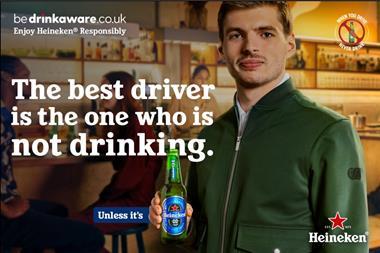
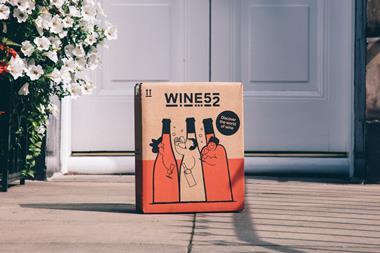

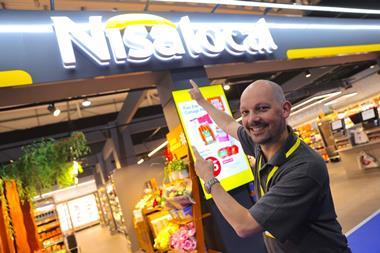
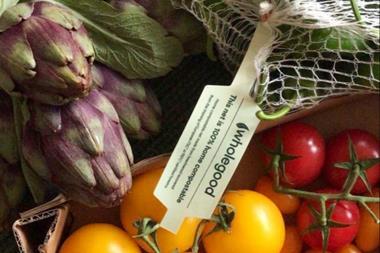


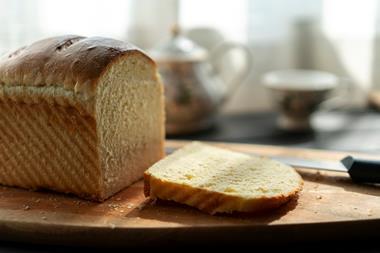
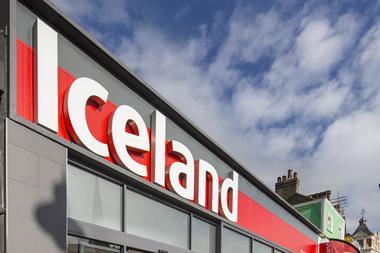
No comments yet